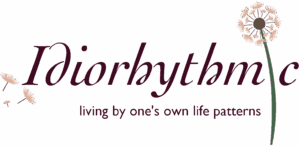It started with this video. While the main point is about medieval hygiene, I was struck by the mention of head covers and how they helped keep hair clean. It brought to mind memories of my grandma, who would wear bandanas as a head kerchief. I don’t know if it was to keep her hair clean so much as they provide protection from the sun and help with sweat.
Now that I am slowly emerging from isolation at home, I decided some head coverings would be useful as well. I have a terrible habit of forgetting to apply sunscreen, let alone wearing a hat. Getting into the practice of wearing kerchiefs could at least save me from a sun-burned scalp.
I’m a fan of bandanas. I’ve kept a bandana in my bag for years. They’re very useful to have on hand, for everything from cleaning sticky kid hands and wiping noses, to serving as emergency masks. I have used mine as a makeshift bag on foraging trips, as a tarot spread cloth, and even, yes, as a headband. While I could have gone out and bought a few more bandanas to wear, I decided–surprise, surprise–it would be better to make my own.
I have plenty of 100% cotton fabric left over from a pants project so I decided to use that. I started by cutting it into 22 ¼” squares. Since the regular stitch width on my serger is ¼” I could finish the edges and then turn them under, leaving me with a 22” square. If the fabric was thinner I might have turned the edge under twice for a ⅛” very narrow hem such as those found on commercially produced bandanas. I wasn’t too fussed, though, and didn’t want to spend the extra time in my overheated workshop.
After turning the seams under I hemmed the edges and was left with three new kerchiefs. All in all the process took an hour. This included interruptions by Ben and the cat (who was peeved that I placed a fan in front of the open window, thus denying him his usual perch).
The fabric is crisp and stiff right now, but as I have learned with the pants, it will soften with repeated washings. If I were to buy fabric for more kerchiefs I would choose a thinner muslin, I think. At this point, though, I still have plenty of leftover fabric that needs to be used up.
I’ve had a surprisingly emotional response to wearing these kerchiefs. They’ve brought me back to my childhood, as I had expected. Memories of pulling carrots from my grandma’s garden, hanging clothes on the line, and riding in the back of pickup trucks all have bubbled up. More than that, is the connection I feel with my grandmother, cousins, aunts and other women in my family who tied on a kerchief before getting on with the task of making a life. For me, this cotton square has come to symbolize what it means to live simply and authentically.
If you decide to make your own kerchiefs to wear, I’d love to see them. If you are finding it difficult to keep the kerchief in place, you can use bobby pins or other hair accessories. I have a pair of turtle barrettes my husband bought me years ago at a convention. I love that I get to wear them this way.
